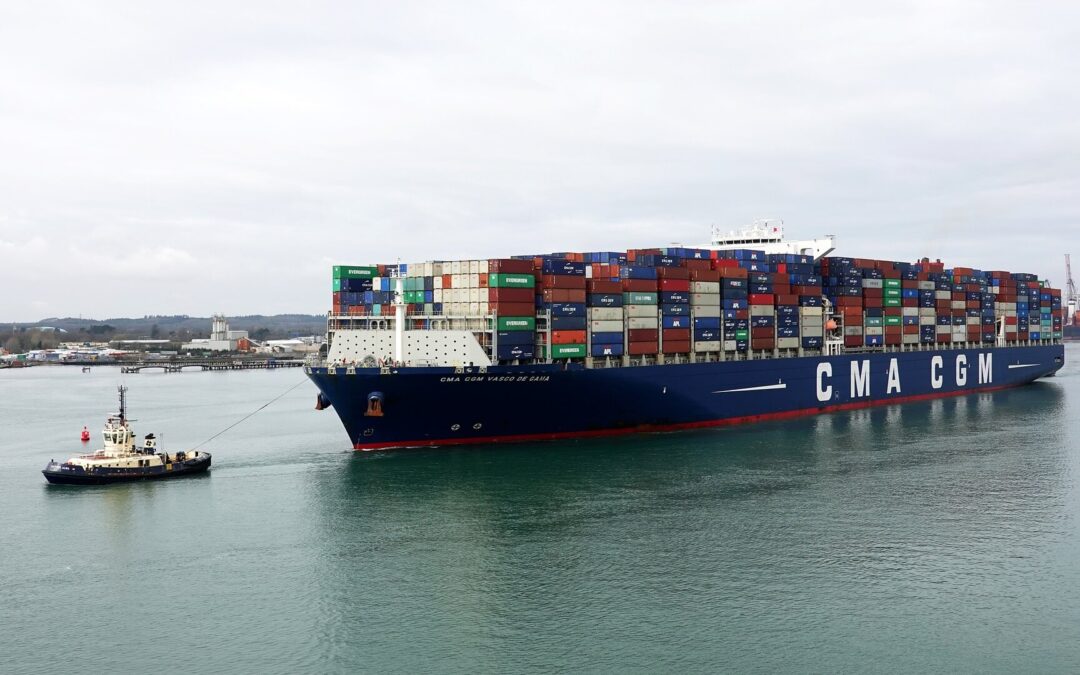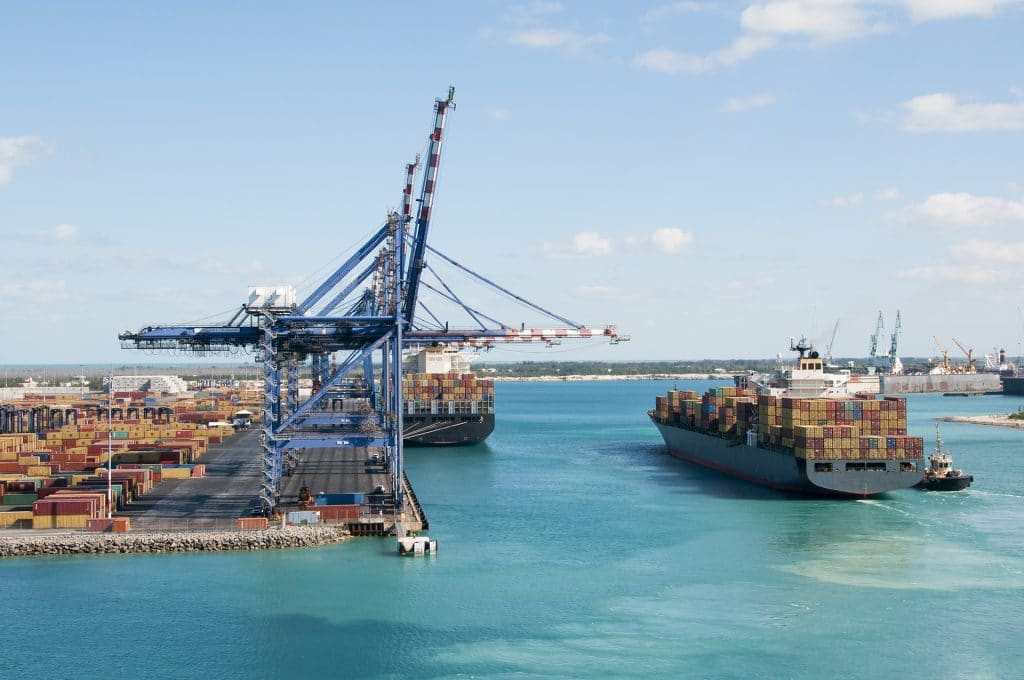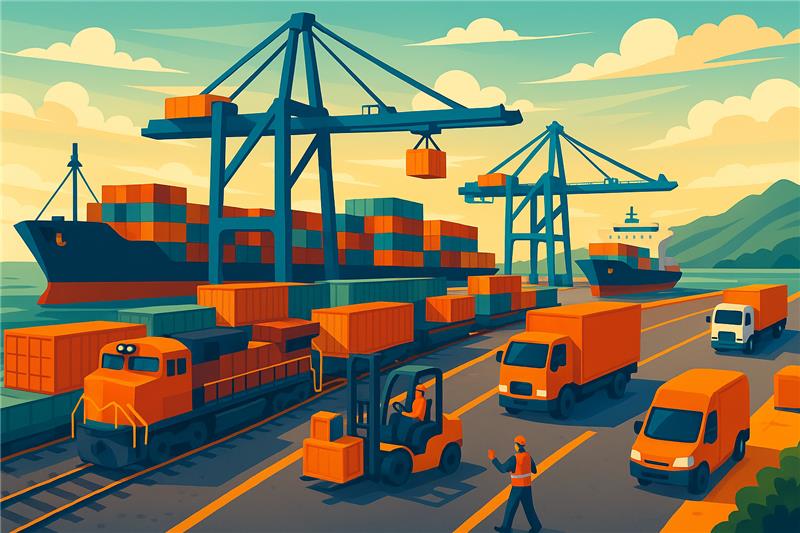This week:
- Realigned ocean carriers announce 2025 surcharges for NorthernEurope-US shipments
- Asia-US container shipping spot rates hit yearly high in the final weeks of 2024
- FedEx spinning off LTL freight division as separate public company, reshaping the market
- Rail dwell times improve at LA-LB port complex, but import surge is right around the corner
Carriers Announce 2025 Surcharges Amid Labor Uncertainty, New Alliances
Ocean carriers have announced significant surcharges on shipments from Northern Europe to the US, starting mid-January. The surcharges will coincide with a potential second labor strike at US East and Gulf Coast ports and the restructuring of ocean liner alliances.
Mediterranean Shipping Co. (MSC) announced last Thursday that it will implement an “Emergency Operational Surcharge” of $2,000 per FEU starting January 18. MSC linked the surcharge to its February 1 exit from the 2M Alliance with Maersk, when MSC will begin operating as an independent carrier.
Zim Integrated Shipping will impose a $2,000 per FEU “ILA Strike Surcharge” from January 10, covering cargo to and from US East and Gulf Coast ports, contingent on a potential strike by the International Longshoremen’s Association (ILA).
According to a press release issued last week, Ellerman Lines will introduce a “Labor Interruption Surcharge” starting January 16 due to “the increased potential for labor disruption at US East Coast ports.” The deadline for the ILA and the United States Maritime Alliance (USMX) to agree on a new master contract is January 15. The ILA previously went on strike on October 1 but entered into a temporary agreement with the USMX three days later.
Beyond MSC’s departure from the 2M Alliance, the surcharges align with other changes in shipping partnerships. Beginning in February, Maersk and Hapag-Lloyd will launch the Gemini Cooperation. Meanwhile, Ocean Network Express (ONE), HMM, and Yang Ming will start operating under the Premier Alliance banner, a rebranding of THE Alliance.
Subscribe to JMR’s Weekly Supply Chain Roundup!
Stay informed with the latest supply chain news, trends, and insights. Get it delivered directly to your inbox every week.
As 2024 Winds Down, Asia-US Container Spot Rates Hit Yearly High
In the final weeks of 2024, container shipping rates from Asia to the US are surging to levels not seen since the pandemic-induced shipping boom of late 2020. The rate spike is driven by increased import volumes ahead of the potential second ILA strike and an early Lunar New Year, which has shortened the post-US holiday shipping schedule.
Spot rates for shipping containers from Asia to the US West Coast have jumped to the mid $4,000s per FEU, up from $2,500 on November 29. The East Coast saw an ever sharper rise, climbing to between the mid $5,000s and low $6,000s per FEU, compared to $4,367 just two weeks prior.
While December is typically a slow period for trans-Pacific shipping after the US holiday rush, this year has been different. US businesses continue to import at strong volumes ahead of the potential ILA strike. Concerns about potential increased tariffs on imports from US trading partners have added to the frontloading. Meanwhile, the Lunar New Year falls on January 29, 2025, which is earlier than usual, shortening the shipping window before factories in Asia close for celebrations.
FedEx Spinning Off Industry-Leading Freight Division, Reshaping US LTL Market
FedEx announced last Thursday that it is spinning off its less-than-truckload (LTL) division into a separate, publicly traded company. Analysts say the separation of FedEx’s parcel and freight divisions—which is expected to happen over the next 18 months—will intensify competition within the US LTL market.
The new company will instantly become North America’s largest LTL provider by revenue. FedEx President and CEO Raj Subramaniam said the separation is occurring at the right time, given the current dynamics of the LTL sector. Industry observers expect the move to completely reshape the market.
Writing in the Journal of Commerce last Friday, Senior Editor William B. Cassidy put into perspective this “new” LTL carrier’s impact on the marketplace. “The creation of a standalone FedEx Freight will upend a strategic LTL puzzle that competing carriers have been vying to complete since the demise of Yellow in 2023,” Cassidy said.
“Among the likely results are increased consolidation across the LTL landscape, an accelerated drive toward dimensional pricing and higher LTL shipping costs,” Cassidy predicted.
LA-LB Rail Dwell Times Improve, But Import Surge Poses Challenges
Rail container dwell times at the ports of Los Angeles and Long Beach have significantly improved in recent weeks. However, an anticipated import surge at the US’s largest port complex could test this progress.
Terminal operators at the ports of Los Angeles and Long Beach report average dwell times of approximately 4.5 days this past week. At the Long Beach Container Terminal, dwell times dropped to an average of 2.5 days, according to Anthony Otto, president of the automated terminal.
These improvements began in November, with average rail dwell times falling to 7.67 days, down from October’s two-year high of 9.86 days, according to the Pacific Merchant Shipping Association (PMSA). However, a bump in imports is on the way. The LA-LB port complex expects to handle 272,354 TEUs in imports this week, up from an approximate average of 200,000 in the last few weeks.
Port of Portland Secures Deal to Keep Container Terminal Open
The Port of Portland has reached a tentative agreement with its long-time stevedore, Harbor Industrial, to keep its struggling Terminal 6 open. The terminal had faced the possibility of closure due to a long run of financial losses.
Under the framework agreement, Harbor Industrial will assume long-term operational responsibilities for the terminal, including marketing, rate-setting, and labor management. This will allow the port to focus on its core infrastructure and development projects.
The port hopes to significantly increase container volume at Terminal 6, targeting 120,000 containers per year by 2032 and eventually 180,000 containers annually. However, the port hasn’t said where that extra business would come from.






